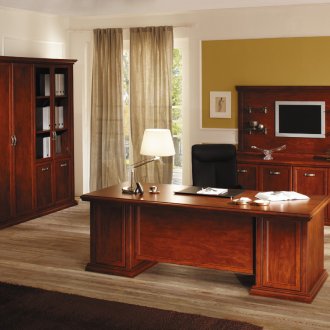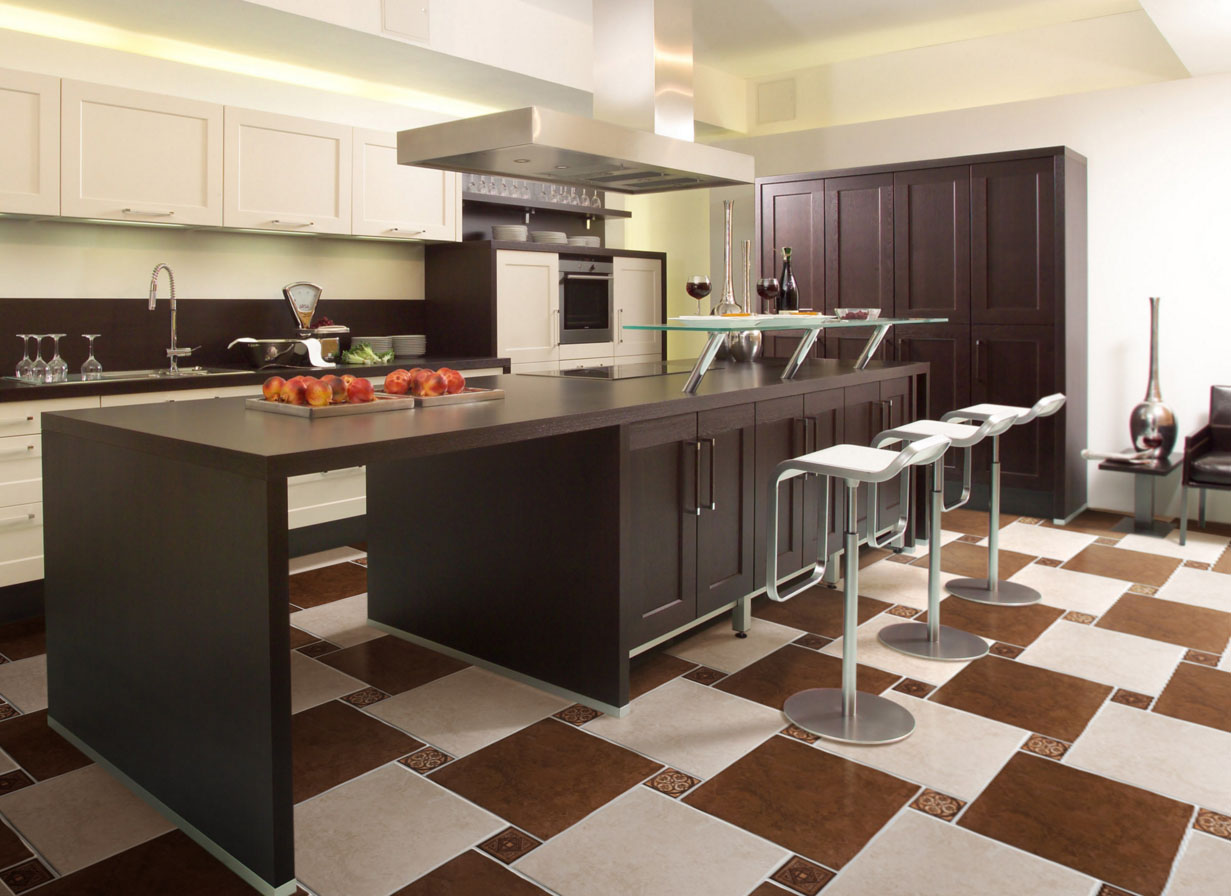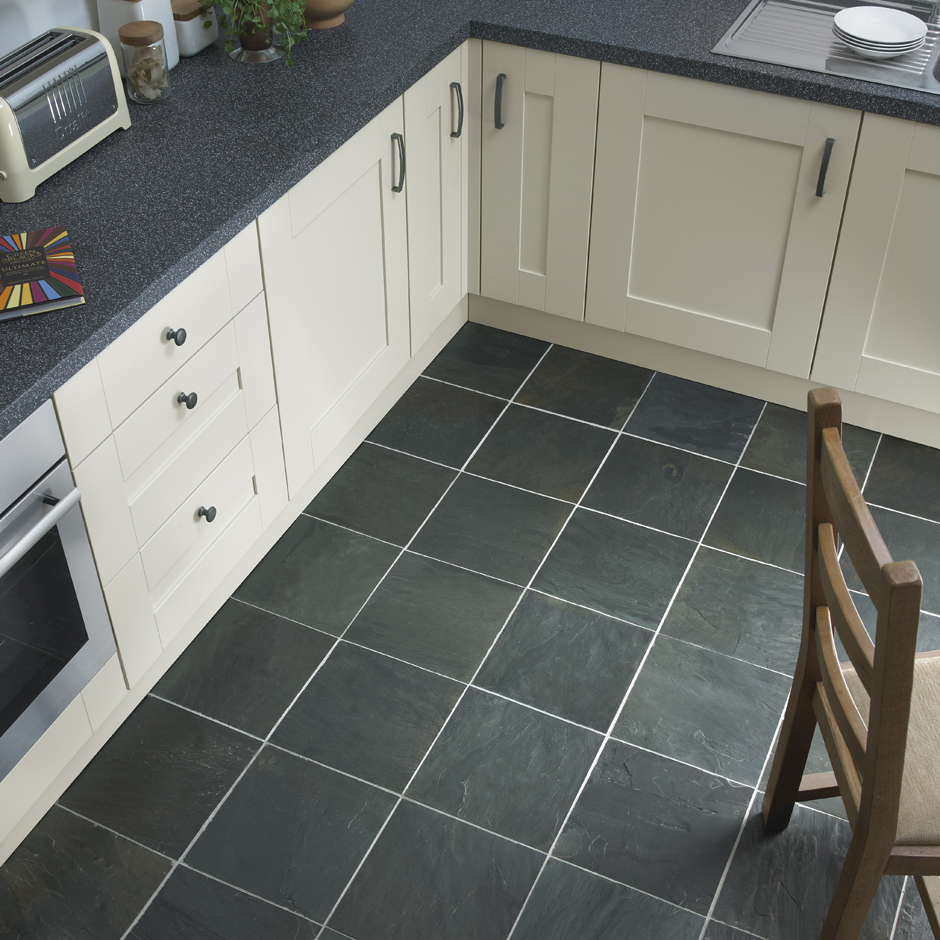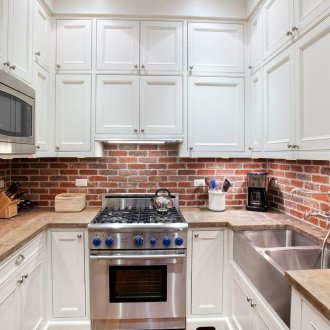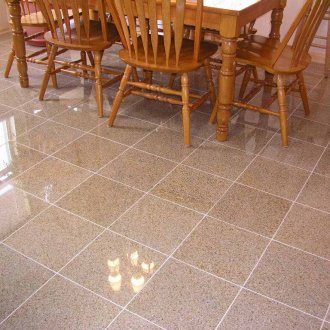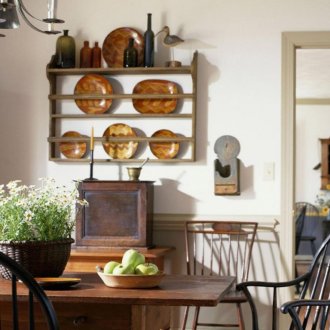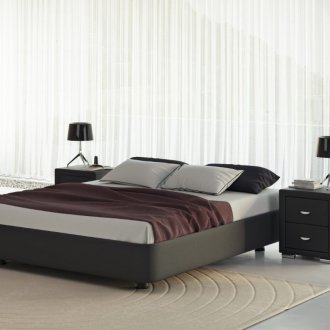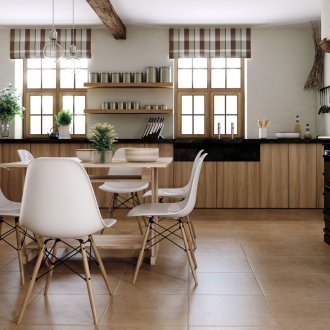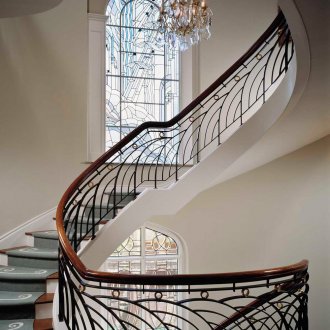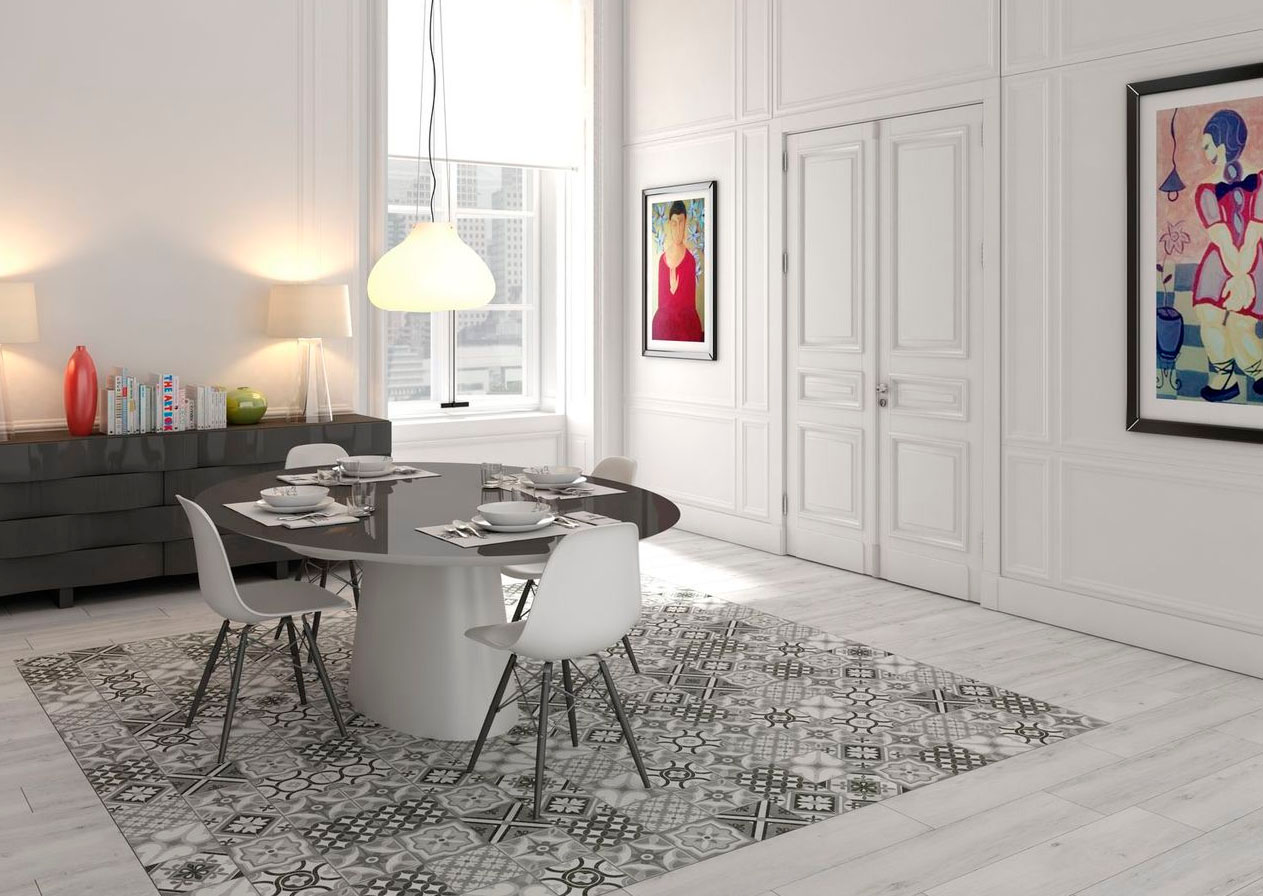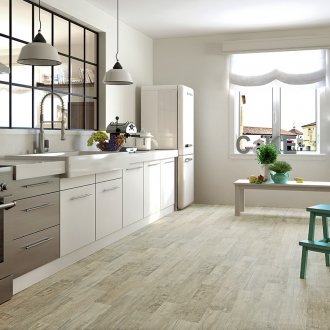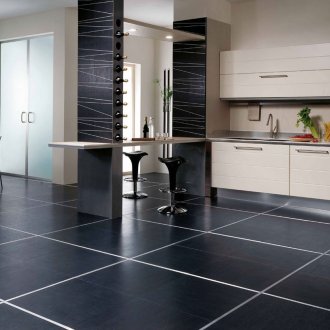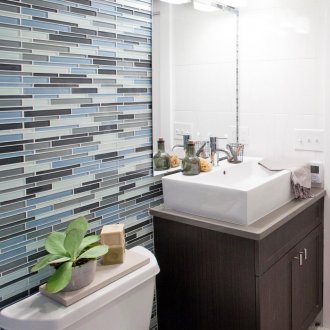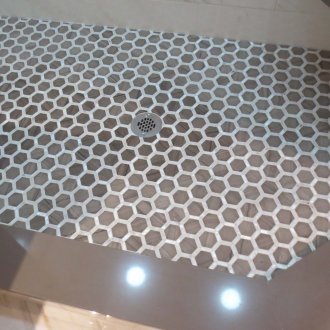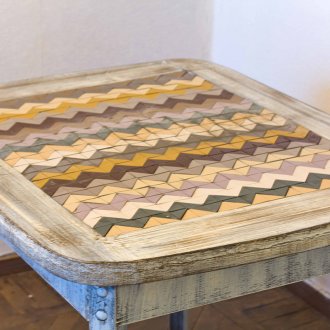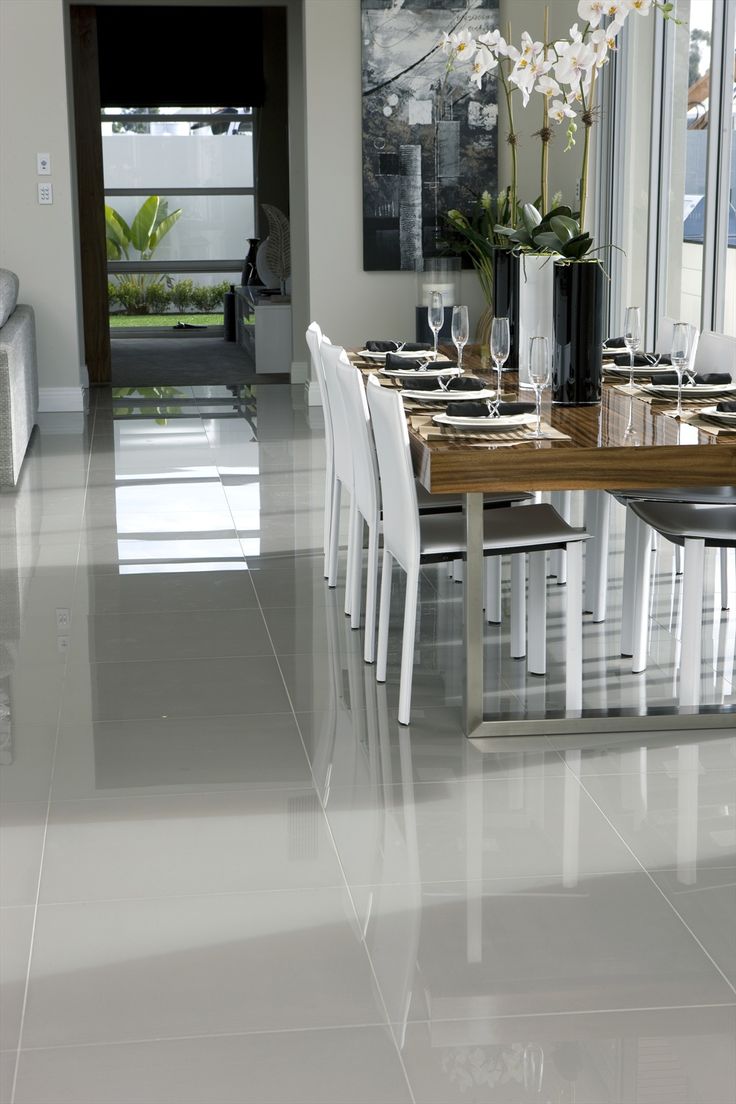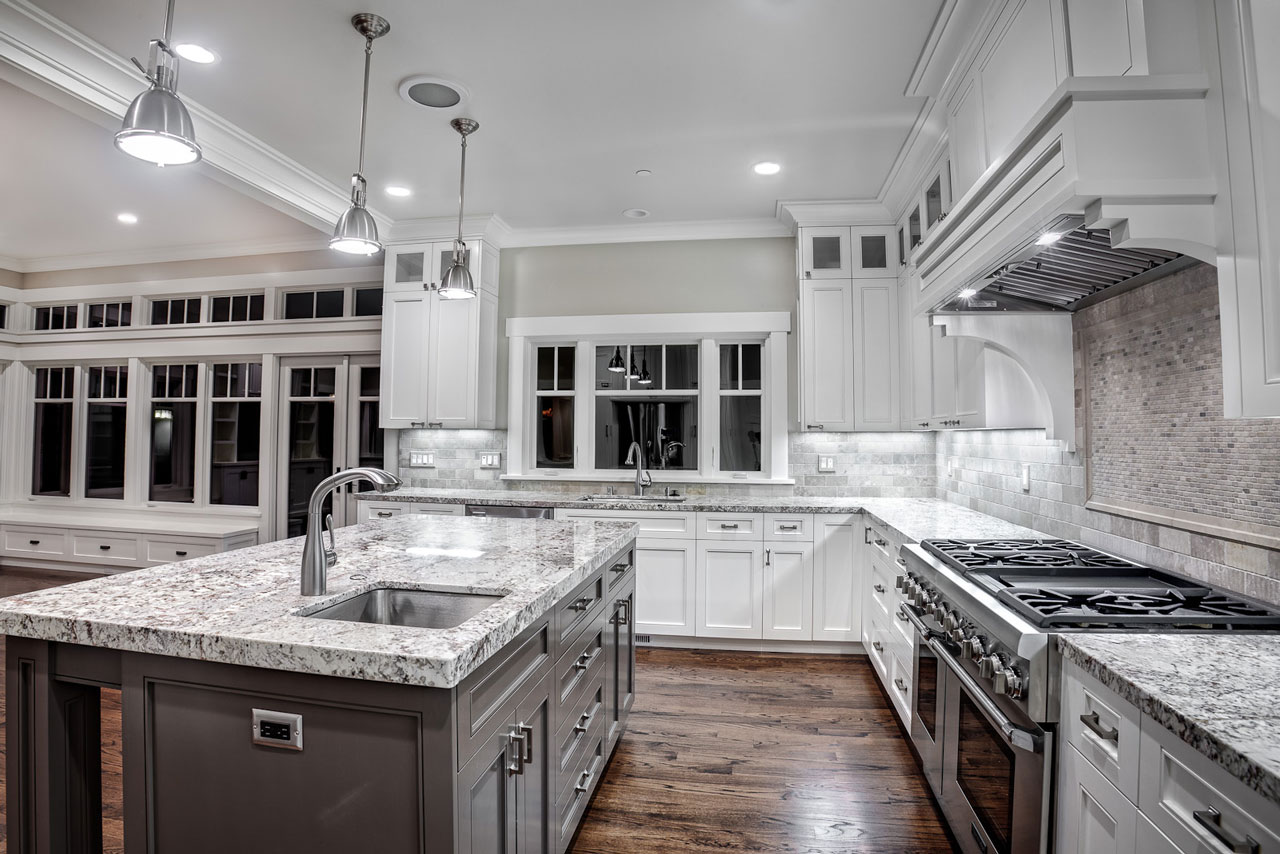Porcelain tile for the kitchen - an elite surface finish (22 photos)
Content
Porcelain tile is deservedly in demand among consumers, because this material has not only excellent strength characteristics, it also elegantly and stylishly transforms an apartment, making it complete.
The manufacturing techniques of porcelain stoneware and ordinary tiles are different, which affects their characteristics. Porcelain is made from natural clay and processed under pressure at high temperatures. This makes the material highly durable, withstanding changes in humidity and temperature. Glazed / unglazed porcelain tiles are produced.
Unglazed: dry pressing technology is used. Tiles are painted over the entire thickness and laid in rooms with high traffic.
Glazed: after pressing, a layer of colored glaze is applied, which is then literally sintered with the base. It is used to create textures with imitation of natural materials (wood, marble, granite, woven fabric).
Most often, granite is used in the repair of a kitchen. Special requirements are imposed on finishing materials:
- strength;
- wear resistance, it is recommended to use tiles with PEI III indicator for the kitchen (for residential premises with medium-intensity traffic - kitchen, balcony, corridor);
- ease of maintenance (due to antistatic, dust is not attracted to the tile);
- resistance to moisture.
Unfortunately, like every material, porcelain tiles for the kitchen are not without drawbacks. The high price discourages some buyers. Although everyone agrees that quality and durable materials cannot be cheap. A cold touch of the tile is not to everyone's taste, especially lovers of walking around the apartment barefoot, but this drawback is eliminated by installing warm floors.
Color palette and tile sizes
When coloring materials, dyes are added to the mixture at the production stage. This method of painting gives the porcelain tile the same shade throughout the thickness of the tile. A variety of shades of porcelain tile allows you to use it for wall, floor, as an apron for the kitchen:
- granite texture imitates the pattern of natural granite. It is distinguished by a high price, since getting a perfect solid color shade is expensive;
- salt / pepper: on a monochrome surface there is a scattering of small inclusions. Thanks to a wide range of shades, such models harmoniously fit into any interior;
- textural imitation of complex patterns (porcelain stoneware in wood or marble) makes porcelain stoneware an important part of kitchen design.
The richness of the color palette allows you to embody both traditional and creative design solutions in the interior of the kitchen.
Common tile sizes (30X30 sq.cm, 40X40, 30X60 or 60X60 sq.cm) allow you to choose the model that is most suitable for the area of the site. Some manufacturers began to produce models of non-standard parameters: 20/30/60 cm by 120 cm. It is clear that just laying plates of this unbanal size will already be an interesting design decision.
The quality of the front surface
The use of different technologies for the manufacture and processing of porcelain tiles allows you to get tiles with different textured surfaces.After the firing step, the material is transferred to the grinding / polishing lines. Special compositions are used for surface treatment and as a result, different levels of specularity are created.
Polished - has a perfectly smooth shiny surface. It is categorically not suitable for flooring, as minimal moisture makes the coating incredibly slippery and traumatic. It can be used as a kitchen apron, but care difficulties should be taken into account (it can be cleaned with special tools).
Matte - not polished after firing. It has established itself as a floor covering. Due to its high strength and affordable price, this is the most popular type of tile.
Satin - in the process of firing, a layer of mineral salts is applied to the surface of the tile. Thanks to the technology, the coating becomes “velvety” and has a subdued sheen.
Rectified - obtained by cutting the edges of the tiles. When surface finishing creates the effect of monolithic seamless coating.
Which porcelain tile to choose is up to the consumer to decide. When choosing a model, be sure to take into account the nature of the purpose of the room.
Rules for laying porcelain tile
The main advantage of the material is that porcelain stoneware is equally good for facing both floor and walls. However, due to different operating conditions, the choice of suitable types of tiles and taking into account the intricacies of laying should be taken responsibly.
Floor nuances
In order for the porcelain tile floor to maintain a flawless appearance for a long time, the following rules and technology for laying slabs are observed:
- the required number of elements is calculated, always with a margin (8-10% of the room area), since there will inevitably be waste: pruning, battle;
- the tile is laid on a level base, free from dust. Roughnesses in the floor can cause surface cracking;
- preliminary marking of the floor will facilitate the installation process. When laying out tiles of different shades, you must try to maintain symmetry with respect to the sides of the room;
- the adhesive solution is applied evenly. Smooth and toothed spatulas will facilitate the process. Using special plastic crosses with a thickness of at least 3 mm, seams of the same width will be obtained;
- for drying the glue, it is necessary to withstand 3-4 days and then you can proceed to the final stage - grouting of the seams. The shade of the composition is selected individually. The most popular color is gray. Work is carried out using a rubber spatula. It is advisable to use silicone sealant near the walls and around the pipes. Remains of glue, grout or sealant are easily cleaned with a damp cloth.
How to choose porcelain tiles for the floor in the kitchen so that the coating lasts a long time? It should be borne in mind that floor tiles experience a greater load than wall tiles, so it is better to choose thick porcelain tiles with enhanced strength and durability characteristics for the floor, and you can create an interesting floor design in the kitchen either by playing with color or by laying tiles.
Kitchen wall decoration
New technologies (digital printing) create unlimited possibilities for creating “artistic” aprons. Porcelain tiles for the walls of the kitchen will become a real decoration of the room, if the repair work requirements are met:
- the wall should be strong enough and have a dry, leveled surface. It is not recommended to mount porcelain tiles on gypsum boards;
- surface marking is carried out taking into account the height of the countertops and cabinets. To create a fixing base, aluminum profiles are installed;
- glue is applied both to the tile and to the walls. Grout for joints is chosen with dirt-repellent and antifungal properties. The most suitable option is epoxy compounds;
- An important part is the design component. Rectangles laid out horizontally will visually expand the space. Vertical styling will visually make the room taller.
Glossy porcelain tiles should be preferred for tile aprons.The shiny surface reflects light well and this effect visually expands the space. It is easier to care for even tiles than embossed tiles. Dark shades are considered the most easily soiled (they remain traces of splashes and stains). The most practical are white, beige-brown tones and surfaces imitating stone or wood.
Porcelain Tile Selection Tips
Manufacturers of building materials are constantly expanding the range of products and improve its quality. To make the purchase of materials a joy, and the repaired premises to keep their elegant look for a long time, remember the following tips.
On the reverse side of the tile must be squares with sides no more than 20 mm and a depth of about 3 mm. The main task of the wrong side is to ensure strong adhesion to another surface. The presence of various grooves improves such a connection.
It is advisable to purchase tiles of the same shade from one batch. This is due to the coloring of the material. Sometimes batches of the same marking may have some differences in shades, which will be noticeable on the general surface.
Only in appearance it is sometimes difficult to check the quality of the material. Alternatively, evaluate the weight of the tile. If the mass per square meter of products with a thickness of 8-9 cm is indicated less than 18.5-19 kg, then this product is clearly made of low-quality raw materials.
A universal option for decorating not only the kitchen, but the corridor, the living room is the use of porcelain tile collections. Facing material for the floor and apron / wall, designed in the same style, will make the interior of the room elegant and unique.

